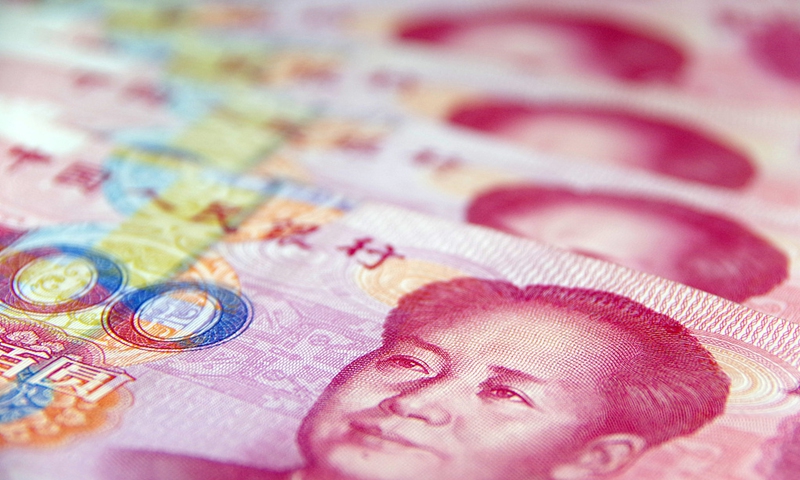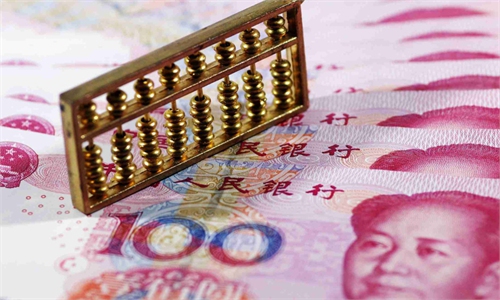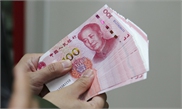
RMB Photo:VCG
The Chinese yuan has bounced back and gained ground in the past week after it dropped breaking the psychological points of 7.0 and 7.2 recently against the US dollar, a trend that experts said means the yuan is stabilizing.
On Monday, the yuan's central parity rate against the US dollar rose by 6 basis points to 7.0992. The offshore and onshore yuan both stood at about 7.11 against the greenback as of press time.
The yuan started to spiral down against the US dollar in late April amid the US Federal Reserve's interest rate hike cycle, and the pace of yuan's depreciation accelerated in recent weeks. On September 28, the offshore yuan breached the level of 7.26, the lowest since the data was released in 2011.
However, since the end of September, the yuan showed signs of stabilization, as the currency started to climb back to the 7.1 level.
Recently, the People's Bank of China (PBC), China's central bank, published a statement on its official website warning against speculation on the yuan, saying that investors should not bet on a one-sided appreciation or depreciation.
Some experts said that the yuan has stabilized in general, as there's scarcely any factor that could support the US Dollar Index to rise much further.
"On the one hand, although the Fed is expected to make more interest rate hikes, the market has already anticipated such moves and the impact has to some extent been released on the market," Xi Junyang, a professor at the Shanghai University of Finance and Economics, told the Global Times on Monday.
On the other hand, it's likely that the US dollar will soon peak, as it is widely anticipated that the US economy will contract next year, and further interest rate hikes by the Fed would be very improbable in the second half of 2023, Xi said.
Therefore, the yuan is unlikely to have another wave of depreciation in the coming months, and even if it does, the range would be limited compared with the past months, he noted, adding that the yuan is unlikely to breach the level of 7.2 again this year, and it might bounce back to about 6.5 against the dollar next year or in 2024.
So far this year, the offshore yuan has depreciated by about 12 percent against the US dollar. In comparison, the euro has depreciated by about 17 percent.
According to Xi, China's economic fundamentals provide solid support for the yuan's stabilization. In particular, China's widening trade surplus is the strongest factor that props up the yuan amid the Fed's rate hike cycle.
China's trade surplus stood at 433 billion yuan ($60.9 billion) in September, compared with 376 billion yuan in the previous month, data released by Chinese customs showed.
Many observers believe that China's GDP growth could have rebounded in the third quarter. A recent survey by the Yicai Research Institute showed that economists estimated China's third-quarter GDP growth at around 3.7 percent, compared with 0.4 percent growth in the second quarter.
Some experts also told the Global Times that the yuan's ability to withstand market risks has increased as Chinese authorities' management of highly speculative cross-border capital flow has made concrete progress in recent years, which also supports the yuan's stabilization.
Global Times


